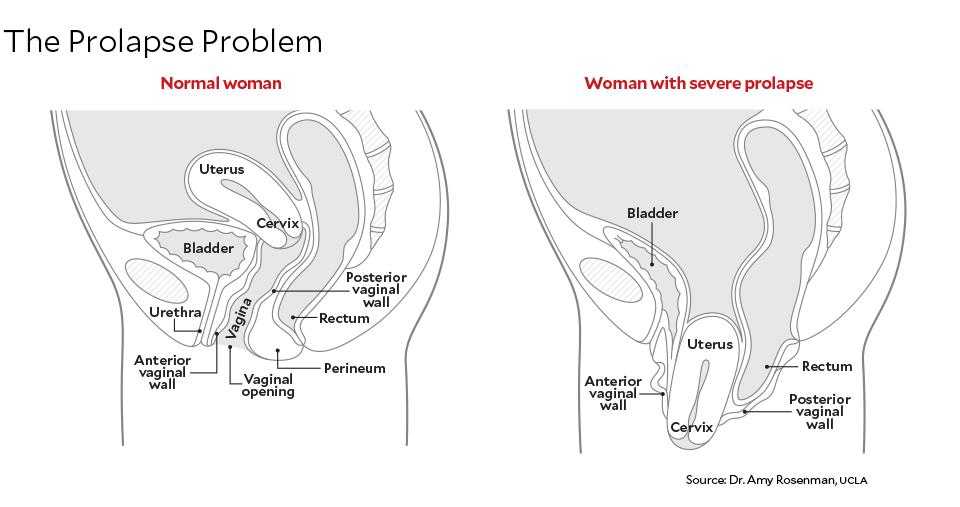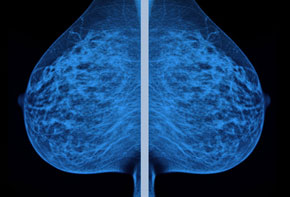When Claire L. found out she was pregnant, she was ecstatic but a little nervous. Every one of her female relatives on her mother’s side—her grandma, her mom, her aunts, her sister—had needed a cesarean section. Slender hips and big babies were a family trademark.
At about 20 weeks, Claire, then 30 and living in Santa Cruz, California, told her obstetrician about her family history. Much to her surprise, the doctor waved away her concerns. The takeaway was that practically anyone can deliver vaginally. Her relatives’ experiences were probably the result of knife-happy, old-fashioned doctors. So Claire went home and did her best not to worry too much about it.
Like many first-time moms, Claire went overdue. A week past her date, an ultrasound indicated that the baby was getting big. She grew nervous again and wondered whether she should be induced. But the doctor had said it would be much better to let the baby come when ready. At about 42 weeks, Claire’s obstetrician finally said it was time and gave her Pitocin—a drug that jump-starts contractions—assuring her once again that everything would be fine. It wasn’t.
As Claire had expected, it was a tight fit, and the baby’s heart rate kept decelerating during contractions. The hospital doctors considered a C-section but pressed ahead with vaginal delivery. When she finally gave birth to a 9.6-pound daughter after 30 hours of labor and an hour of pushing, the doctors congratulated her: The baby had made it through a rough delivery in perfect health.
Claire, not so much. She had three deep vaginal tears, and her labia, her obstetrician told her, were swollen to 50 times the normal size. Shortly after the birth, she began to bleed profusely—a postpartum hemorrhage caused by the intense stress on her pelvis. She couldn’t pee normally for months afterward, and just sitting caused excruciating pain. Forget sex—it wasn’t until her daughter was three months old that she even started to feel better, and she still wasn’t back to normal after nine months. “I was told that I’d rest at home for a little bit and then I’d be fine,” Claire told me. “I feel kind of lied to.”
Childbirth is, to be sure, far safer now than it has been for most of human history. In the 18th century, roughly 1 in 100 women died in the process—today in the United States, it’s about 1 in 4,000. But nonfatal injuries that wreak havoc on a woman’s quality of life remain surprisingly prevalent. Depending on the study, 50 to 80 percent of women who give birth experience tearing of the pelvic skin and muscles. For more than 1 in 10, the tearing is severe enough to damage the anal sphincter muscle, which often leads to the loss of bowel and bladder control. In a 2015 Canadian study, a whopping half of all new mothers were still reporting urinary incontinence a year after the birth, and more than three-quarters had residual back pain.
The silence of Claire’s obstetrician on such matters is a problem that infects the entire birth community. Doctors are required by law to warn women about what could happen to their bodies during a cesarean section, from infection to the uterus splitting apart, and pregnant women are routinely informed about genetic conditions like Down’s syndrome and birth defects like spina bifida that could affect the baby. Yet according to more than a dozen physicians and public health experts I interviewed for this story, rare is the obstetrician who has a frank conversation with a pregnant woman about the long-term problems she might face. Even women with the time and money to rigorously prepare for birth seldom hear much about how labor and delivery can damage the pelvic bones and muscles. Childbirth classes gloss over it, as do most popular pregnancy books.
First-time mothers are not told that roughly one-third of all women, at some point in their lives, will develop stress urinary incontinence—a condition wherein a cough, a sneeze, or a laugh is likely to cause an “accident.” Or that surgery for this condition is three times more common in women who give birth vaginally compared with women who deliver by cesarean section. We hear little, if anything, about the likelihood of pelvic organ prolapse, a horrifying condition in which the uterus or bladder sags, causing chronic discomfort and often intense pain during physical activities. Prolapse, which usually shows up in middle age or later, happens to 4 percent of women who give birth vaginally versus 2 percent who have a cesarean.
All told, according to a 2008 study by researchers at the California HMO Kaiser Permanente, about 1 in 3 women suffer from a pelvic floor disorder (a category that includes urinary incontinence, fecal incontinence, and prolapse), and roughly 80 percent of those women are mothers. Women who deliver vaginally are twice as likely to experience these injuries as women who have a cesarean or who have not given birth. For 1 in 10 women, the problem is severe enough to warrant surgery—that’s about double the rate of men who undergo prostate surgery. The costs add up: The website Healthcare Bluebook estimates that the typical price for a vaginal hysterectomy, one of the most common fixes for uterine prolapse, is about $14,400, including hospital costs, while a bladder repair surgery for incontinence runs about $28,000. Nearly one-third of women who have pelvic-floor surgery will go on to have at least one more. According to one study, nursing home admissions resulting from urinary incontinence were costing Americans about $6 billion a year—and that was a decade ago.
Senior homes aren’t the only industry cashing in. The US market for adult incontinence products (Depends, etc.) is projected to grow from $1.8 billion in 2015 to $2.7 billion by 2020, and it is expected to catch up to the baby diaper market within a decade. Sleek undergarments advertised by models in their 40s are designed for middle-aged consumers. “We’re trying to make the product more normal, and even fun,” an executive from industry leader Kimberly-Clark told Bloomberg Businessweek, “with real people in our ads saying, ‘Hey, I have bladder leakage, and it’s no big deal.'” (Kimberly-Clark also recently introduced a tamponlike product for women with urinary stress incontinence to “let you laugh without leaks,” one ad promises.)
Yet it is a big deal. Not only are these conditions widespread, debilitating, and expensive—they are also deeply humiliating. Women with prolapse are often unable to exercise and “are too embarrassed about the bulge in their vagina to have sex,” says Dr. Victoria Handa, a urogynecologist and the director of the Department of Gynecology and Obstetrics at the Johns Hopkins Bayview Medical Center. In a 2009 study, Handa found that women with prolapse reported great difficulty reaching orgasm and even getting aroused in the first place. Many incontinent women are afraid to run, jump, or even leave home, lest they have an accident in public. And social isolation begets depression. It doesn’t help, Handa says, that there is still a culture of silence around pelvic problems, especially prolapse: “No one says, ‘I can’t go horseback riding with you, Ginny. My uterus is out too far.'”
It’s hard to pinpoint the contribution of childbirth to pelvic floor disorders in part because most hospitals don’t track what happens to a new mother after she leaves. Newborns typically get excellent follow-up care—they see a pediatrician days after birth, again several weeks later, and then every few months for their first year. For most new mothers, though, insurance covers only one visit with a gynecologist, six weeks after birth—before some pelvic injuries even become apparent. If a woman complains of pelvic symptoms to her regular doctor, good luck: A 2016 survey found that most primary care physicians didn’t screen for prolapse, and those who did believed it was “rare.”
Mothers are more involved in labor and delivery decisions nowadays than they’ve ever been, and yet in some ways they are still treated as something of an afterthought. Hans Peter Dietz, an Australian urogynecologist who studies maternal childbirth injuries, put it like this: “Once the baby is born healthy, the obstetrician calls it a day. And if the mother is damaged, she’s told, ‘Well, what did you expect? That’s what happens when you have a baby.'”
Most childbirth classes teach the same version of labor: hugely pregnant lady has a twinge or two, the twinges gradually progress into full-blown, involuntary contractions, and then, following some amount of groaning and yelling at others, she feels an overwhelming urge to expel her baby. After 20 minutes to two hours of intense pushing, a squalling infant emerges. There is, of course, enormous variation to this narrative: Poke around and you’ll find tales of labors lasting anywhere from a few minutes to 75 days. There are many factors that determine the course of labor, from the delivery technique used to the baby’s readiness to be born. But a key factor is the mother’s body.
The female pelvis is a bucket-shaped cage of bone and muscle that sits at the bottom of the abdominal cavity. Attached to the top of the bucket are two wide, winglike bones called ilia, jutting out from either side of the tailbone. The body of the bucket has two pubic bones in front and hip bones on the sides, with the back of the bucket formed by the tailbone. The bucket’s base consists of a group of muscles called the pelvic floor.
For most of pregnancy, the uterus sits above the brim while the bucket body holds the bladder and intestines—those organs will get squished out of the way when the baby passes through. In the third trimester, a woman’s body begins producing hormones that loosen the ligaments between the pelvic bones, widening the top of the bucket so the baby’s head can fit inside. As she goes into labor, the opening to her uterus (the cervix) thins, lengthens, and dilates, allowing the infant to pass into the birth canal, the vagina.
The list of ways in which the pelvis and reproductive organs can be damaged during this process is practically endless. Most women, as mentioned, experience at least some vaginal tearing. But in severe cases, the perineum—the area between the vagina and the anus—rips completely open, exposing the vagina to dangerous bacteria and leaving the mother unable to control her bowels. Sometimes, as in Claire’s case, the baby is too big to fit easily through the pelvis, and the infant’s head or shoulders can break the mother’s bones on the way out. In yet another harrowing scenario, a piece of the placenta remains stuck to the uterine wall after the baby is born, causing the woman to hemorrhage. If the pelvic floor muscles stretch too far during delivery, the uterus may sag into the vagina: prolapse. And even after a woman heals from her immediate injuries, she can experience chronic nerve pain, muscle spasms, or numbness for months or years. Plenty of women make it through a birth okay, only to suffer from incontinence or prolapse years or decades later, for reasons doctors still don’t understand.
It’s tempting to dismiss these less-than-deadly problems as inevitable side effects of the miracle of life. Haven’t women been pushing giant babies out through their tiny vaginas since time immemorial? Isn’t this what we’re designed for? Yet many of the obstetricians I spoke to say there’s been an uptick in traumatic births. That’s mainly because the mothers are older. From 2000 to 2014, the average age at first birth rose from just under 25 to 26.3, and the number of first-time moms over 35 leaped 23 percent.
This is significant because the risk of complications increases dramatically with age. In 2014, Norwegian researchers studied roughly 170,000 first-time mothers and found that their rate of emergency cesareans—the kind doctors perform when something goes wrong during labor or delivery—was about 7 percent for mothers in their early 20s but 22 percent for those older than 40. Even women in their mid-30s have an elevated risk. In the United States, the overall rate of cesareans (emergency or planned) is 27 percent for mothers aged 20 to 24, but 41 percent for those 35 to 39 years old.
Why is this? For one thing, explains Dietz, the Australian urogynecologist, the mechanisms that kick off labor don’t seem to work as well in older first-time moms, which can make them more likely to go past due—another risk factor. Older moms also tend to have less effective contractions, which can lead to longer labors and extended pushing—which is strongly linked to pelvic injuries. In 2013, for instance, British researchers found that a woman’s odds of severe trauma to the sphincter start out quite small but grow 40 percent with each minute she pushes. And because the pelvic muscles and ligaments are less elastic with age, the babies of older moms are more likely to get stuck coming out.
That’s not all. Obesity and chronic conditions that grow more prevalent with age, such as diabetes and hypertension, are also risk factors for a difficult delivery. In a 2013 study of 2,235 births, researchers found that 41 percent of obese mothers and 57 percent of morbidly obese mothers—more than one-third of American women now fall into one category or the other—had cesareans, compared with 31 percent of women of normal weight. From 1998 to 2009, according to a 2012 study published in the journal Obstetrics & Gynecology, the rate of severe labor complications including heart attacks, kidney failure, and aneurysm increased by 75 percent during delivery and 114 percent during postpartum hospital stays. For women pushing 40, all of this comes in addition to the heightened difficulty of getting pregnant and carrying a baby to term in the first place. After beating those odds, older first-time moms often assume the hardest is behind them—until they run into trouble in the delivery room.
So the number of women at high risk for serious labor complications is increasing—and at the same time, so is the pressure to have a baby with minimal medical intervention. Public health experts agree that America’s current cesarean rate (about 32 percent) is excessive, and that vaginal births are usually preferable for both mothers and babies. Assuming all goes smoothly, mothers who deliver vaginally have fewer infections and blood clots than women who have cesarean sections, and their postpartum recovery time is typically shorter and less painful. Babies delivered vaginally tend to have stronger lungs than their surgically delivered counterparts. Scientists posit that beneficial bacteria babies pick up in the birth canal protect them against asthma and allergies later on.
But it’s not just cesarean sections that have fallen out of fashion. Among highly educated women—who are also more likely to have babies later in life—forgoing all labor-easing medication has become a badge of honor. For this we can thank the natural childbirth movement, which began more than 50 years ago as a reaction to the overly rigid approach of midcentury obstetricians. Up until the late 1940s, some women laboring in hospitals were even given an amnesiac drug called scopolamine that erased their memories of childbirth. This was convenient for the (overwhelmingly male) doctors who presided over these so-called twilight deliveries, but many women found it traumatic. They woke up sore and disoriented, only to be sent home to care for the helpless new human who had appeared in the bassinet beside them.
During the ’70s, feminists decided they no longer wanted to give birth in a stupor, so they began relearning the ancient art of midwifery and experimenting with having babies at home. In 1971, a midwife named Ina May Gaskin founded a nonhospital birthing center at a rural Tennessee commune called The Farm. Gaskin and her fellow midwives considered their work an act of protest. “It is our basic belief that the sacrament of birth belongs to the people and that it should not be usurped by a profit-oriented hospital system,” she wrote in her 1975 classic, Spiritual Midwifery.
The sentiment spread and a movement was born. It would be hard to overstate Gaskin’s influence on today’s birth culture, at least in the privileged enclaves where doulas and mindfulness are in and epidurals and cesareans are decidedly out. Ina May’s Guide to Childbirth is now the fifth most popular pregnancy book on Amazon, and it’s not hard to see why: It makes childbearing sound blissful. In first-person birth stories from The Farm, women refer to contractions as “rushes” and expound upon the “ecstatic” experience of labor. “I could feel my baby move me open, and when the intensity of the rushes increased, I just leaned on a tree,” one woman writes. “I became more aroused than I ever had been in my life!” writes another. “There was no pain, only the most extreme sexual pleasure and complete openness. It was orgasmic.”
Now 76, Gaskin lectures all over the world. She has starred in documentaries and given a widely watched TEDx talk called “Reducing fear of birth in U.S. culture.” What to Expect When You’re Expecting, America’s top-selling book on pregnancy and childbirth, adopts Gaskin’s ideas, encouraging women to write a detailed birth plan to present to the delivery team at the hospital, with instructions on everything from mood lighting in the birthing suite to specific medications and procedures to avoid.
Woe to the modern mother who seeks to escape the painful pushing. A few years back, tabloids began reporting that some celebrities—Spice Girl Victoria Beckham, supermodel Claudia Schiffer, actress Elizabeth Hurley—were choosing to deliver their babies surgically rather than going through the ordeal of labor. This led to a rash of finger-wagging articles, including a 2004 Time piece (“Too Posh to Push?”) that warned of an alarming trend of elective cesareans. These were “not the emergency cesareans that have been performed for hundreds of years to rescue babies from women in medical crisis,” it read. “Rather, they had an increasingly popular modern-day variation: planned, scheduled operations for all sorts of less-than-critical reasons.” Some women even had the audacity to be “terrified of labor pains and complicated deliveries or want to avoid the wear and tear on their bodies.”

Dr. Amy Tuteur, a former obstetrician and vocal critic of the natural childbirth movement, told me Gaskin’s philosophy “really accomplished a lot when it came about, because childbirth was very patriarchal.” But now it’s gone too far the other way, Tuteur says: We hear all the great parts about natural childbirth, but “there is very little about women who end up incontinent or with sexual dysfunction or broken bones, because no one really considers that a big deal.”
Part of the problem, says Lisa Korst, a former obstetrician and public health researcher in Los Angeles who studies trends in hospital births, is the disconnect between what happens in the delivery room and what happens after a new mother leaves the hospital. Medical codes that specify the severity of complications after birth simply don’t exist. “We code postpartum hemorrhage so badly,” Korst says by way of example. “It’s not written down how much you bled. There’s no code for going to the ICU.” And if a woman picks up an infection during delivery that doesn’t show up until a few days after she’s released, “that wouldn’t be marked in the hospital record.”
At the six-week postpartum appointment, doctors seldom look for pelvic injuries. Gynecologists are trained to make sure that the uterus is returning to its normal size and that any tears are healing well and free of infection—not to evaluate the muscles and tissue, says Stephanie Prendergast, a physical therapist and founder of the Los Angeles-based Pelvic Health and Rehabilitation Center. This irks Prendergast because many injuries can be diagnosed with a simple internal exam. “It takes less than 30 seconds,” she says. “You can palpate for tenderness. Can a woman squeeze or push? If not, she is probably having problems with bowel movements.”
All of which is a little ironic, because one thing the natural childbirth movement got right was taking care of postpartum mothers. After a baby is born, traditional midwives stick around. They check to make sure a mother isn’t bleeding too much, isn’t struggling to use the bathroom—and they keep checking. But after the six-week appointment, women who give birth at hospitals are pretty much on their own.
Consider the case of Lauren Henderberg, a 36-year-old mom who lives in upstate New York. In March 2008, after two days of labor—and a delivery in which a forceps was used—Henderberg, then 27, had a baby girl. And though she suffered a deep tear and bled profusely, her doctor cleared her to leave the hospital after just two days. “I wasn’t really offered help or counseled even on how to keep the area clean,” she told me. Henderberg spent the next six weeks in acute pain, unable to control her bowels. At her six-week checkup, she was still deeply bruised and swollen, but she was told her symptoms were normal and was sent on her way.
By July, she was still in pain, bleeding, and having fecal incontinence. Her doctor continued to insist nothing was wrong, but Henderberg’s symptoms were profoundly disabling. She declined invitations from friends and family, giving vague excuses. “When you are sitting there and you have an accident or you smell bad, you don’t want to go out,” she says. “I didn’t want to go somewhere where I didn’t know where the nearest bathroom was.” She went back to her job as a teacher but eventually quit. What if she had an accident in the classroom? To make matters worse, she began having panic attacks, usually triggered by the sound of clinking metal, which brought back memories of the forceps.
Henderberg began to feel more and more isolated, but the thought of discussing her symptoms with friends and family was mortifying. “I really just thought, ‘People don’t talk about this,'” she says. Finally, after months of silence, she broke down and confided in her mother, who persuaded her to see a different doctor. The new doc said her symptoms were most certainly not normal. In the months that followed, Henderberg started physical therapy and was outfitted with an internal medical device that stimulated her pelvic nerves with electricity and helped her control her bowels. She also received counseling to deal with psychological trauma from the birth. Her insurance covered some of the costs, but not all; she spent thousands of dollars on various therapies and adult diapers—an extra burden on top of her lost teaching wages.
In 2011, Henderberg began writing about her experience, and what started as a cathartic exercise evolved into a blog. “A lot of my friends hadn’t had kids yet,” she explains. “I felt like I had to tell them my story. I have my master’s degree. I read. I consider myself pretty educated. But there wasn’t even any material out there that I could have read.”
So what’s to be done? Certainly I’m not arguing that hospitals should start slicing open every pregnant lady who darkens their doorstep. They already tried that, basically, and it didn’t work. As cesarean rates soared in the ’90s and 2000s, so did maternal deaths. The challenge, instead, is to figure out which women have the highest chance of a vaginal childbirth going south, and—this is important—to tell them about it. Doctors can start by warning older women, overweight women, and those with chronic metabolic conditions. These are difficult conversations. “It’s politically incorrect to say something about how waiting till later in life to have your first baby will increase your risk of problems during delivery,” urogynecologist Dietz told me. “That’s a piece of news that no one wants to hear.”
Invariably, the doctors I talked to mentioned that there are probably many other risk factors we don’t know about yet, but they noted that funding to research pelvic injuries is hard to come by—proposals to help old ladies not leak pee don’t exactly rake in the grant money. That seems shortsighted, given all the cash to be saved on unnecessary surgeries and premature nursing home admissions.
A few doctors—such as Dietz and University of Michigan urogynecologist John DeLancey—are nevertheless studying the toll of pelvic injuries on women. “If I were in their place,” DeLancey told me, “I would expect the same kind of treatment as a guy who tears his ACL or has prostate cancer.”
Ten years ago, DeLancey’s team began trying to figure out how to prevent some of these harms in the first place. Using state-of-the-art MRI techniques, the researchers identified one injury in particular that dramatically increases a woman’s odds of problems later on. At the base of the pelvis, there’s a small muscle called the levator ani that gets completely torn off the bone in about 15 percent of vaginal births. It takes training to detect the injury immediately after birth—few doctors know how to do so—and after six months or so, it becomes nearly impossible to spot. So the vast majority of women to whom this happens won’t know until years later, when they become incontinent or have a prolapse.
DeLancey and Dietz, working separately, found that certain women are much more likely than others to experience a levator ani tear. Pushing for two and a half hours or more is one risk factor, as are certain body types. Delivery with forceps is the biggest risk factor of all. DeLancey also co-authored a small 2015 study in which 29 percent of postpartum women at risk for levator ani tears were found to have fractures from childbirth.

DeLancey introduced me to one of his patients, a 59-year-old mother of two I’ll call Carol. In 1992, after a difficult labor—in which the blood vessels in her eyes burst and the baby got stuck in the birth canal—Carol gave birth to a daughter at the University of Michigan Medical Center, home to one of the nation’s top hospitals. Her uterus and bladder prolapsed and stayed that way for about a decade, through the birth of her second child—two surgeries were required to fix the situation. “It affected everything,” Carol told me. “I couldn’t do any kind of exercise. It’s like having a tampon sticking halfway out all the time. You get really sore.”
With further research, DeLancey says, doctors may be able to better predict a woman’s risk for levator ani tears and other pelvic injuries, and perhaps help women like Carol avoid them. In some cases, that might mean a planned cesarean section, but there may be less drastic solutions. Prendergast, the pelvic physical therapist, points to studies showing that some women with mild injuries can heal completely if they begin a program of simple exercises right after giving birth. In France, it’s common for new mothers to have “perineal reeducation” therapy, similar to what Henderberg went through, in which a physical therapist leads the woman through exercises with the help of an intravaginal electrical device. That may sound torturous, but the technique has been shown to dramatically curb incontinence. (Kegel exercises, recommended by childbirth books and classes to strengthen a woman’s pelvic muscles, do not appear to help. “It’s what everyone would like to believe,” DeLancey told me, “but I don’t think there’s any evidence to support it.”)
Simple measures taken during birth can also help women avoid injury. Proponents of natural childbirth frown on the use of epidurals—which deadens sensation in a woman’s lower body by means of medication injected into the spinal cord. But a 2010 study in the British Journal of Obstetrics and Gynecology found that women who had an epidural were less likely to damage their pelvic muscles than those who delivered without. (Medical evidence does not support the claim by some natural childbirth advocates that epidurals interfere with breastfeeding.)
Using labor-inducing drugs such as Pitocin can sometimes lead to a more traumatic delivery, but induction under limited circumstances may help reduce pelvic injuries. If a baby is unusually large at full term, for example, it is often better to induce than wait for labor to commence naturally a week or two later, when a still-larger baby might break his mother’s bones on the exit.
These things are worth considering, even for women put off by the idea of modern medicine crashing their birth-day party, because forging ahead with a difficult labor may actually mean more medical intervention in the long run. DeLancey has performed thousands of surgeries to fix childbirth injuries. The health care system could prevent a great deal of suffering, he says, simply by educating the women at high risk for pelvic complications.
And then there’s this: Telling pregnant women the truth about their bodies just seems like the right thing to do. At the very least, it behooves us to ditch the magical thinking and stop pretending that natural childbirth is an amulet that protects women from harm. That goes for the entire birth community: the books, the midwives and doulas, the Lamaze classes, and most of all, the doctors. Because, quite simply, it’s an issue of control. If you don’t truly know what to expect when you’re having a baby, then you’re more likely to shut up and let the physician make the decisions. And then all of a sudden we’re back to the 1940s, putting women through hell and giving them a pill to make them forget it ever happened.
Carol told me her mind often returns to those agonizing hours on the delivery table. “No one ever said, ‘You’re pushing for too long,'” she says. “They tell you all about how a C-section is serious, it’s a surgery. Well, guess what? I ended up with two surgeries! I’m always thinking, ‘This would have been different if I had just known.'”
















